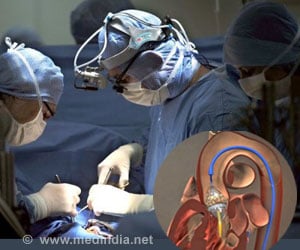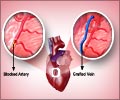
The February 2015 issue features three commentaries on landmark articles. The topics include lung cancer surgery, saphenous vein autografts, and the first open-heart surgeries for congenital defects.
Lung Cancer Surgery
The first commentary features a 1977 study from Clifton F. Mountain, MD, from the University of California, San Diego, who assessed the role of surgery for control of lung cancer. The commentary was written by Ara A. Vaporciyan, MD, from the University of Texas M.D. Anderson Cancer Center in Houston. In the study, Dr. Mountain explored the impact of a lung cancer staging system that he helped to create on the utility of surgical treatment of cancer.
"The work makes it clear that the staging system was a significant step in creating a common language. Publications such as these validating its use were absolutely necessary to disseminate its use, which was in its infancy," wrote Dr. Vaporciyan. "If only Dr. Mountain could witness the concept of maintenance targeted therapy, immunotherapy, and the success of adjuvant therapy. The foundation he created allowed us to visualize these possibilities before we had any notion as to what form they would finally take."
Saphenous Vein Autografts
A second commentary, written by Joseph F. Sabik III, MD, from The Cleveland Clinic Foundation, outlines the importance of a 1968 study by Rene G. Favaloro, MD, also from The Cleveland Clinic, who applied a new surgical vascular reconstruction technique to treat coronary artery stenosis (plaque buildup that narrows the coronary arteries, decreasing blood flow to the heart). The new technique used a saphenous vein autograft, which involves grafting part of the saphenous vein (the longest vein in the leg) to the blocked coronary artery. The graft bypasses the blocked portion of the coronary artery, allowing more blood flow to the heart.
"Although Dr. Favaloro was not the first to perform an aorto-coronary saphenous vein graft, he built on what he learned from his early operations," wrote Dr. Sabik. "He applied these new surgical techniques to treat both left-sided and right-sided coronary artery stenoses, and he pioneered treatment of acute myocardial infarction with emergency surgical revascularization. Many of his techniques and surgical principles we still use today."
Advertisement
John E. Mayer Jr, MD, from The Children's Hospital in Boston, wrote a third commentary highlighting a 1986 article from C. Walton Lillehei, PhD, MD and colleagues from the University of Minnesota, that described 30-year outcomes in patients who underwent the first open-heart repairs for congenital heart defects through the use of cross-circulation between parent and patient. Cross-circulation was pioneered by Dr. Lillehei and was used very early in open heart surgery. Blood flow was routed from the patient to a parent's femoral vein and lungs, where it was oxygenated before being returned to the patient's carotid artery.
Commenting on the operations that took place from early 1954 to mid-1955, Lillehei and colleagues wrote in the 1986 article: "Today, open-heart operations are performed so effortlessly and with such low mortality in all ages from neonates to octogenarians that it may be difficult for the current generation of cardiologists and cardiac surgeons to appreciate that little more than 30 years ago, the outer wall of the heart represented a seemingly impenetrable anatomical barrier to the surgeon's knife and to the truly incredible therapeutic accomplishments that are routine today."
Advertisement
Source-Newswise









